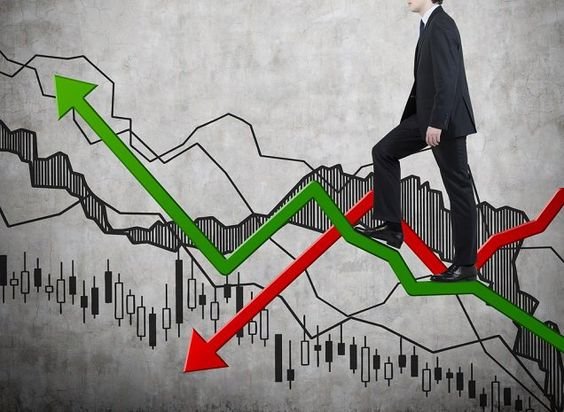China’s economic recovery faced a setback as factory activity and the services sector showed unexpected slowdowns ahead of the Lunar New Year holiday. These developments have added pressure for stronger fiscal stimulus to counterbalance weakening domestic demand and external trade challenges.
Factory Activity Falls Below Expectations
The official manufacturing purchasing managers’ index (PMI) fell to 49.1 in January, marking the lowest level since August 2024 and dipping below the 50-point threshold that separates expansion from contraction. This reading missed economists’ forecasts, which had predicted a modest expansion for the month.
While factory activity in China typically slows before the Lunar New Year holiday due to production pauses, analysts noted that the extent of this decline was more severe than anticipated. Economists attributed the downturn to weaker domestic demand and persistent trade headwinds, which continue to weigh on the world’s second-largest economy.
Non-Manufacturing Sector Weakens
The non-manufacturing PMI, which measures activity in construction and services, also dropped to 50.2, hovering just above the 50-point mark that signals growth. The figure highlights a cooling in China’s services sector, which had previously shown resilience amid economic pressures.
The slowdown in the non-manufacturing sector underscores challenges in sustaining momentum across industries that rely heavily on domestic consumption. Economists expressed concern over the sluggish pace of recovery, indicating that additional measures may be required to stimulate demand and confidence.
Analysts Call for Stronger Stimulus Measures
Economists are calling for stronger fiscal and monetary policy interventions to address the slowdown. Raymond Yeung, chief economist for Greater China at Australia & New Zealand Banking Group Ltd., described the extent of the decline as “beyond expectations.” He emphasized the need for more robust fiscal policies and a potential cut to the reserve requirement ratio (RRR) for banks to increase liquidity and stimulate lending.
Yeung added that recent efforts to revive growth have not been sufficient to overcome the structural challenges facing China’s economy. “The economy is far from recovering,” he said, pointing to the need for deeper and more targeted stimulus measures.
Market Reaction Reflects Concerns
Financial markets reacted to the disappointing PMI figures with caution. The CSI 300 Index, which tracks major onshore Chinese stocks, swung to losses after initially posting modest gains. This reflects investor sentiment that the current stimulus measures may fall short of addressing the economic slowdown.
China’s 30-year government bond futures rallied 0.7%, signaling increased demand for safe-haven assets amid concerns over economic uncertainty. Meanwhile, the yuan weakened by about 0.3% in both onshore and offshore trading, highlighting growing concerns about China’s economic trajectory.
Challenges Facing China’s Economy
China’s economy is grappling with a dual challenge of weak domestic demand and external trade headwinds. The country’s export sector has faced slowing global demand, while rising geopolitical tensions have added further pressure to trade and investment flows.
Domestically, consumer confidence remains subdued despite recent stimulus measures, including tax cuts and infrastructure spending. The property sector, a significant driver of China’s economic growth, continues to struggle with weak sales and rising developer defaults, further dampening sentiment.
The Need for Data-Driven Policy Adjustments
The PMI figures released by the National Bureau of Statistics provide an early snapshot of China’s economic health for January, underscoring the challenges policymakers face in steering the economy toward sustained recovery. The data highlights the importance of data-driven policy adjustments to address specific pain points and rebuild momentum.
Economists suggest that a combination of fiscal and monetary measures, including increased government spending, tax incentives, and rate cuts, could help restore confidence and spur economic activity. Additionally, targeted support for sectors such as manufacturing, real estate, and services could address underlying weaknesses and improve growth prospects.
Global Implications of China’s Slowdown
China’s economic performance has significant implications for global markets and economies, given its role as a major driver of global growth. The slowdown in factory activity and services could have ripple effects across supply chains, commodity markets, and trade flows.
Weaker demand from China could impact exporting nations, particularly those in Asia, which are closely tied to Chinese trade and investment. Additionally, commodity-exporting countries could face challenges as reduced industrial activity in China weighs on demand for raw materials like iron ore, coal, and oil.
Looking Ahead
The upcoming months will be critical in determining China’s economic trajectory. Policymakers are likely to weigh additional stimulus measures to address the slowdown and restore confidence. Analysts will closely monitor data on consumer spending, industrial production, and trade to gauge the effectiveness of policy interventions.
China’s economic recovery remains a focal point for global markets, and the government’s response to the current challenges will play a pivotal role in shaping the outlook for 2025. While the Lunar New Year holiday typically brings seasonal fluctuations, the severity of the recent slowdown highlights the need for bold and decisive action to stabilize growth and support long-term development.




